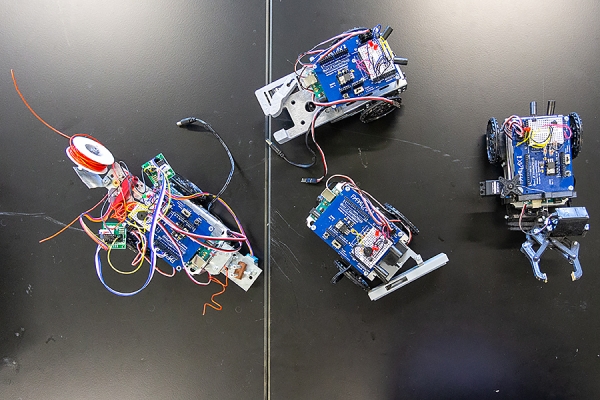 Miniature robots built by mechatronics students display a variety of designs for a variety of tasks.
Miniature robots built by mechatronics students display a variety of designs for a variety of tasks.
A fourth-year course for students of mechanical engineering draws in disciplines of electrical engineering and computer science to deliver a unique learning experience.
Professor Jalal Ahamed requires students in his Mechatronics class to develop small-scale working robots to solve a real-world engineering problem. The students challenge themselves to create something inventive, interesting, and creative — and they deliver.
“The open-ended aspect of the projects actively engages them to be innovative and to connect theories with real-world engineering problem-solving,” Dr. Ahamed says.
Mechanical systems are at the core of the course; he instructs students to make them more precise, smart, and autonomous via the integration of electronics and programming.
To build a robot that interacts, navigates, and functions in an uncontrolled environment, students first learn about hardware systems — how to code and program the robot’s minicomputer. Once those fundamentals are mastered, students pitch their project ideas and get started.
Every design is unique and there are no two projects alike, Ahamed says. The project challenges students to think imaginatively, nothing is unrealistic, and they do not rely on existing designs.
The last time he taught the course, the results ranged from autonomous snow ploughs to a tow-truck, a pitcher, and a forklift. Some employed 3-D printing, while others used such readily available materials as craft sticks.
“The course really gives students the opportunity to actively learn the full cycle of mechatronic system development from conceptualization, modeling, hardware development, manufacturing and crafting, to coding and implementation,” Ahamed says. “It closes the learning loop with a positive experience. The final project demonstration day is always festive, students cheering for each other’s success and excited to see so many uniquely themed projects.”
